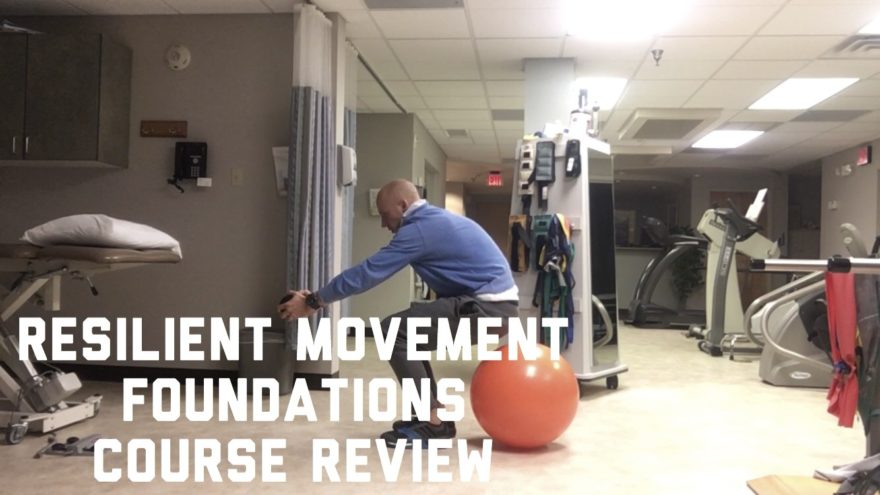I recently had the pleasure of attending a class put on by my fellas at Resilient Performance Physical Therapy.
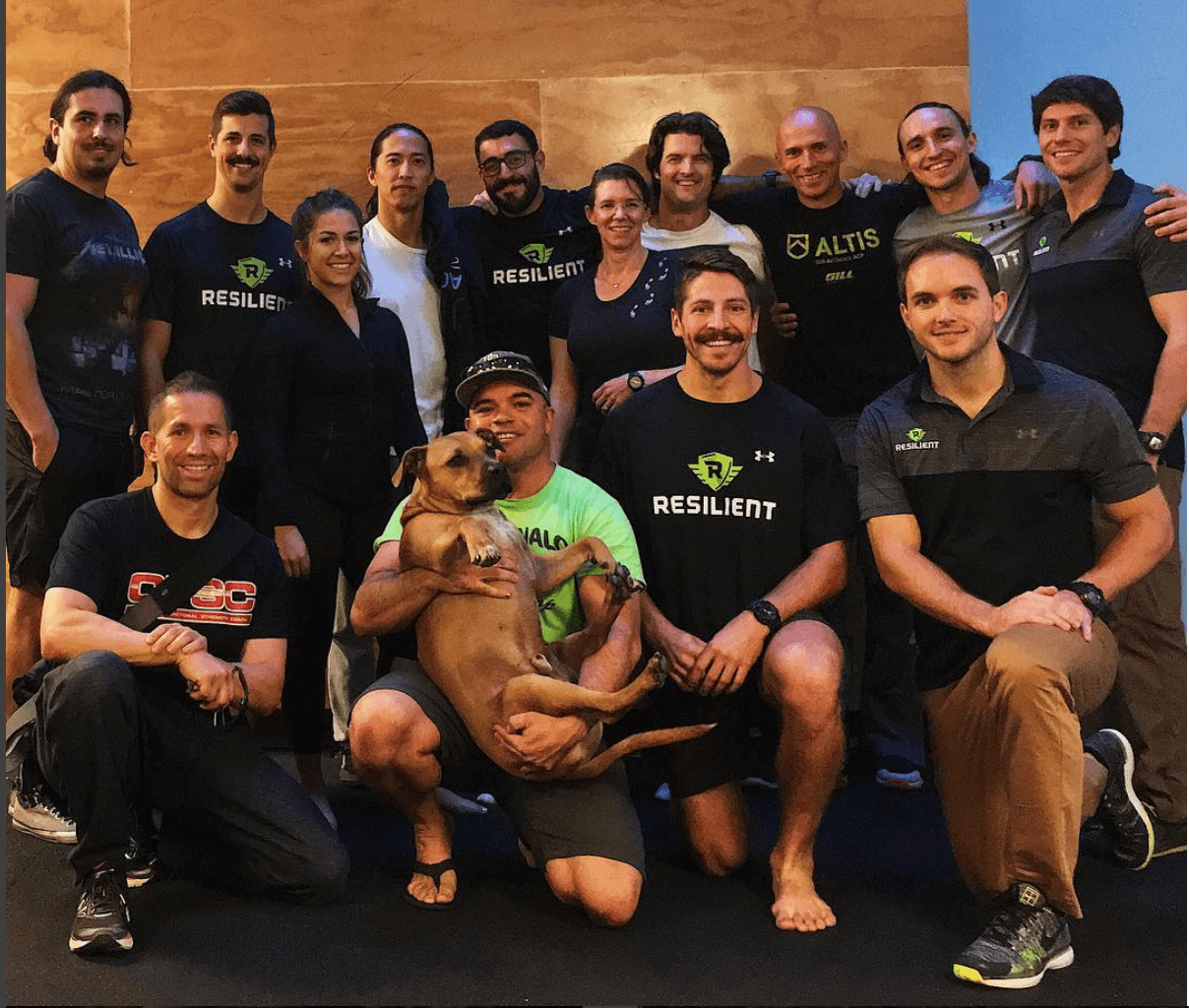
I went to this course for a few reasons. First off, I of course support the home team. I can’t even front, Douglas Kechijian, Trevor Rappa, Greg Spatz, and I go way back, and are very much related through IFAST family and directly (Doug is my younger older brother, Trevor is my son, and Greg is my stepson #dysfunctionalfamily).
That said, there is were a couple big things I wanted to take away from this course, which I did in spades:
- Mastering basic movement
- Program design
In these two areas, the Resilient fellas delivered in spades. Knowing what good technique is in the basic movement patterns, how to coach, and how to regress, are all underappreciated topics that these guys teach quite well.
So should you take this course? An emphatic hell yes. I give a more indepth review as to why in the video below, so go ahead and check that out.
Once you got the verdict, check out my favorite takeaways in the course notes, and then for the love of God sign up for a course of theirs!
Click here to check out the Resilient Seminar Page
Table of Contents
Principles
If the class could be summed up in one sentence, it would be this:
“How to do the basics really well.” ~Doug Kechijian
Many courses advocate for various strategies to enhance movement, performance, health, and well-being; claiming to offer a panacea.
The stark reality is that there is no holy grail.
Nonspecific movement interventions idiosyncratically transfer to tasks meaningful to the client. Some movements may change a person’s life, other may be completely inert. This situation creates a conundrum when determining how fancy we need to get with movement.
It is this problem, this uncertainty with transfer, that compels us to stick with a classic recipe for success:
Basic movements + Intelligent programming = winning
It is these two qualities, achieving technical mastery of the basic movements, and designing an intelligent program, that are the crux of this course.
The Definition of Training
Training is the controlled application of stress that allows for organismal adaptation.
The three trainable domains we seek to improve include:
- Variability – The range at which a system can act
- Power – The intensity a system can perform at
- Capacity – The volume of mechanical work and energy the system can produce
The tasks an individual wishes to perform will require varying degrees of these three qualities.
Given that this course emphasized movement foundations, and variability is foundational for movement, let’s unpack this concept a bit.
Movement Variability
Variability is a desirable quality to have because it gives an individual options and multiple strategies to combat stressors.
That said, variability has a sweet spot. Too little, and the system becomes rigid. Too much, and the system becomes unstable.
A great example that Doug provided was the heart rhythm. Compare and contrast atrial flutter and asystole:

Neither of these rhythms are desirable from a health or performance standpoint. For the heart to function optimally, we want a normalized QRS complex with slight variations between R-R intervals.
Most all human systems, movement included, have a desirable range within they function the best. An effective amount of variability. We fall into extremes when we cannot cope with persistent chronic stressors (e.g. modern life).
Movement variability entails having the capability of producing slight variations within similar movements. This variety allows for minimizing overuse and dispersing workload effectively.
Though in practice it is hard to measure variable movements, we can use joint position as a proxy to do so. If an individual cannot actively and passively move in three planes, variability is likely reduced. Reduced variability will unfavorably alter where joint forces are dispersed, potentially causing problems.
Loss of variability typically occurs by increased drive towards extension. Extension reduces the degrees of freedom one is capable of moving in, and increases reliance on passive structures for support.
Extending is an efficient strategy during times of stress. Metabolic demand is reduced because of increased passive structure reliance, and movement constraints allow for better movement management. For example, it is easier to quarter squat with heavy load than it is to deep squat with the same load.
Extension-bias predominantly occurs along the axial skeleton, which governs and impacts motion at the extremities. Thus, assessing range of motion at all of the joints can provide a gross estimate of one’s movement variability.
I really liked an analogy Doug used to educate patients on variability. Consider an alphabet. Losing the ability to use some letters in the alphabet would require alterations in your grammar. Certain letters might get overused (which could be areas that are beginning to hurt).

Losing letters is analogous to losing movement options. If we can restore that alphabet, one’s movement options, then one can potentially be more adept with grammar (aka complex movement).
For the personal trainer and strength coach, assessing the basic loaded movements…
- Squat
- Deadlift
- Push
- Pull
- Carry
…can provide valuable information that can alter decision-making.
In essence, the training process is the assessment.
Pelvic Foundations
This section was taught by Trevor, and went over basic biomechanics and kinesiology regarding the lower quadrant.
The big key in this portion was demonstrating how movement variability is lost in the lower quadrant, via the pelvis anteriorly tilting. This position can have consequences on both the lumbar spine and the hips, and they showed a solid amount of research that illustrate this point.
The first tier line of variability restoration would be to effectively coach the squat and deadlift pattern. Maintaining a relatively neutral position.
If you want to learn more about coaching the squat, click here.
If you want to learn more about coaching the deadlift, click here.
If you have someone who has a hard time maintaining a neutral spine position during either of these movements, Trevor suggested a couple substitutions:
Deadlift Subsistutions
Using a high handle trap bar or pulling from blocks limits depth, reducing potential hip impingement that could occur secondary to an anteriorly tilted pelvis.
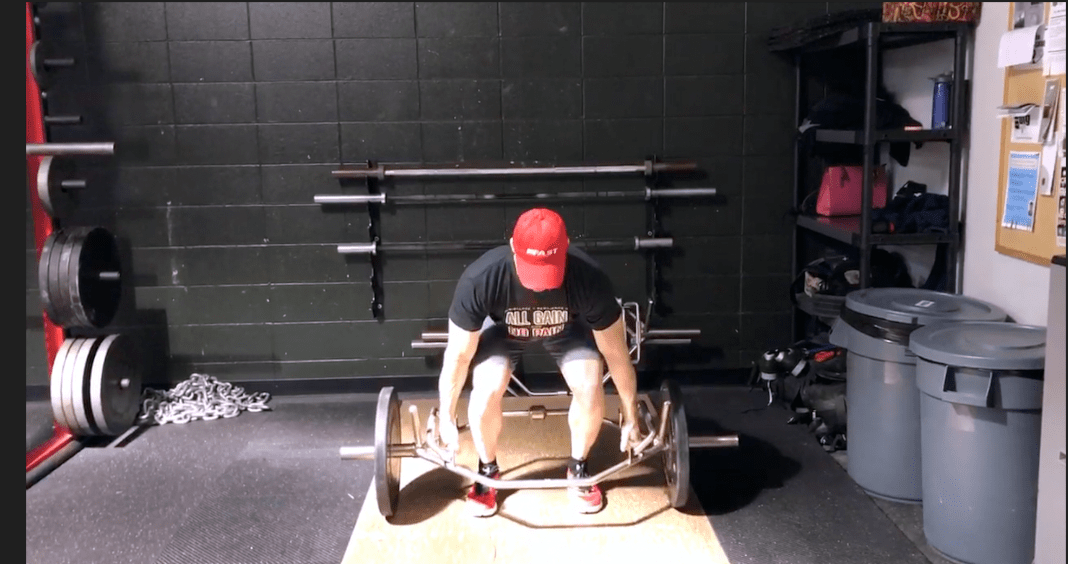
Squat Substitutions
Perform anterior loaded variations and use Olympic lifting shoes to create a posterior weight shift.
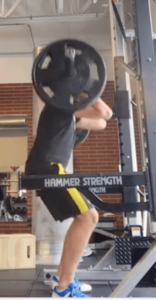
The Difference Between a Squat and Deadlift
The key difference between these movements is the knee and hip relationship. The knees and hips should move together in the squat, whereas reduced knee flexion and greater differential movement of the hip and knee occurs in the deadlift.
How to Increase Pelvic Movement Variability
If one is unable to attain good body position through cueing in either of these movement patterns, movement strategies are employed to increase requisite variability.
While I shall not demonstrate the vast number of activities we went through during this course, I’ll definitely show you my favorite—the bottoms-up squat sit. It’s a great tactic to restore squat mobility, and will absolutely light up your hamstrings, quads, and abs.
I also became more of a believer in the Zercher squat after this class. It’s typically not a variation I use because of the potential discomfort at the elbow, but the cues and tweaks I was shown made all the difference. As Doug so eloquently put it:
“A zercher squat is a goblet squat you can load.” ~Doug Kechijian
Here is a video of my boi Mike Robertson doing the move (don’t forget to check out his site):
Here are the two key form changes that made a big difference:
- Making a fist with one hand and grabbing said fist with the other
- Hugging the weight towards the chest
Thoracic Foundations
Greg Spatz ran the show on this section, and much of the talk centered around rib mechanics and respiration.
In the thorax, movement variability is lost via the diaphragm taking an inspiratory position, which causes the ribs to flare upwards and the thoracic spine to extend. This position reduces degrees of freedom in the thorax, scapula, and shoulders.
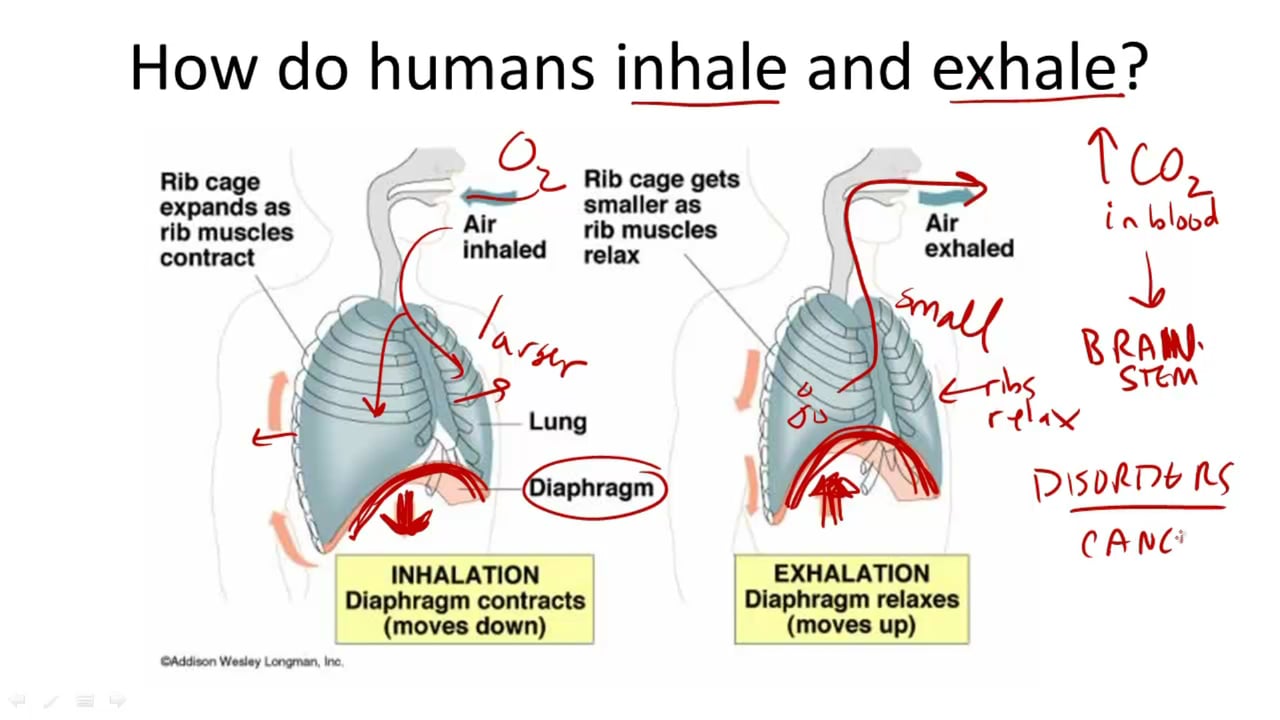
We can increase thoracic movement variability by exhaling to pull the ribs down and back, while reaching the arms forward and up. These combined movements allow for the diaphragm to re-dome, and places the shoulders in a position that allows for greater mobility to occur. Pushups would be a great example that fills this need.
Pushes and pulls were the name of the game in this sections, and my favorite move was by far the subscap pullup. Namely because I want to be able to do this thing [side note, Doug is a beast]
Plyometric Programming Considerations
My favorite discussion from this section was by far the one on plyometrics. Plyometric activities are used to increase power, force production, and rapid force absorption.
While it is clear that most athletes could benefit from this modality, an underappreciated population that needs plyometrics is the elderly.
Consider what happens during falls. Oftentimes, the individual lacks the power and speed necessary to stick and absorb landing from a perturbation. Low level plyometrics can be essential at improving this quality, potentially reducing fall risk.
Some of the plyometric activities Doug suggested for the elderly included:
- Hops in place
- False Drops
- Skips
- Dancing
Resilient uses Mike Young’s plyometric intensity classification, which I am also a fan of, to determine plyo progressions.
Plyometrics are classified according to four variables of intensity:
- Height of the fall – Higher heights are more intense
- Speed of movement – Faster speeds are more intense
- Type of stiffness being displayed – Long amortization times load tissues longer
- Points of contact on the ground – fewer points increase balance challenge.
Sum Up
Appreciating the basics can never be overdone, and the boys at Resilient teach the basics better than anyone else I have come across. This class has my strongest recommendation.
To summarize
- Training is controlled stress application that seeks to improve variability, power, and capacity
- Variability provides systems to have options at which to operate at
- Movement variability has a sweet spot. Too little leads to rigidity (extension) and too much creates instability (hypermobile)
- Knees and hips move together in the squat, knees move less in the deadlift
- Ribs down and back attain thoracic movement variability
- Plyometrics are necessary activity for the elderly
If you want to find out more about the fellas at Resilient, check out their website, Youtube Channel, Twitter, and Instagram.
What are your favorite variations of the basic movements? Comment below and let us know.
Recommended Relevant Resources
Coordinative Variability and Overuse Injury
